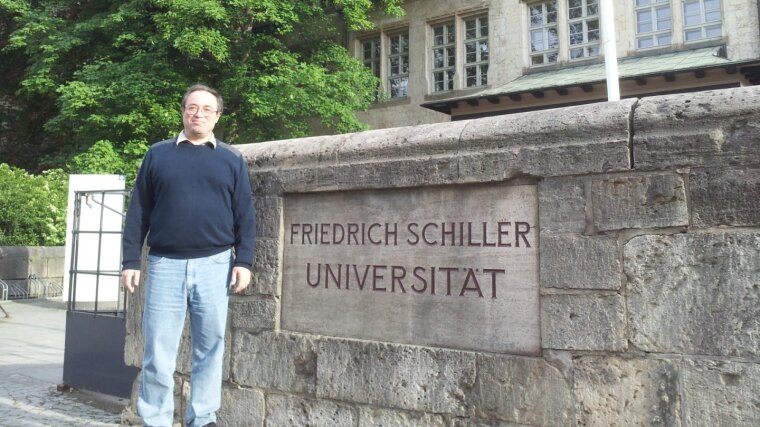
Prof. Mikhail N. SHNEIDER
Image: PrivateMikhail N. Shneider, Applied Physics Group, Dept. of Mechanical & Aerospace Engineering, Princeton University, Princeton, USA, is visiting the Faculty of Physics and Astronomy as ASP Visiting Professor in May 2014. During his stay he will give two lectures.
Dr. Mikhail N. Shneider received a master's degree in theoretical physics (with honors) from the Kazan State University, Russia, a Ph.D. in Plasma physics and Chemistry from All-Union Electrotechnical Institute, Moscow, and Doctor of Sciences (highest scientific degree in Russia) in Plasma physics and Chemistry from Institute for High Temperatures, Russian Academy of Sciences, Moscow. Since 1998, Dr. Shneider has been working at the Mechanical and Aerospace Engineering Department, Princeton University. At present, he is a Senior Scientist in the Applied Physics Group. His research interests are in the theoretical study of gas discharge physics, physical gasdynamics, atmospheric electrical phenomena, non-linear optics, and laser-matter interaction. Dr. Shneider has published more than 150 papers in refereed journals (7 review papers) and one book.
website of Mikhail N. ShneiderExternal link
Lecture 1: Weakly-Ionized Plasma Processes in Upper Atmosphere
Time: May 8, 2014, 16:00
Place: Conference room, Max-Wien-Platz 1, 07743 Jena
The present state of electrical phenomena and related transient luminosity events (TLE) in the upper atmosphere will be presented: observations, manifestations and possible explanations. Beautiful natural phenomena Red Sprites, Blue Jets and Gigantic (Blue) Jets are of great interest to many researchers. Red sprites are large scale weakly ionized nonequilibrium electrical discharges that occur high above thunderstorm clouds, spanning the altitude range 50 to 90 kilometers above the Earth's surface. Blue jets the name given to a transient luminosity events growing upward with a speed of about 100 km/s from the upper boundary of a thundercloud. Theoretical models and possible small-scale laboratory experiments of red sprites and blue jets will be discussed.
Lecture 2: Molecular Ensembles In Non-Resonant Optical Lattices
Time: May 14, 2014, 09:00
Place: Conference room, Max-Wien-Platz 1, 07743 Jena
In this talk recent theoretical and experimental results on the interaction of optical lattices with neutral gases will be reviewed. Small gas density perturbations produced by the electrostrictive effects of laser beams (when the optical potential well depth << kT) can be used for powerful nonintrusive diagnostics based on coherent Rayleigh and Rayleigh-Brillouin scattering. Effects such as bulk drift can be induced in a gas by a periodic optical traveling wave (lattice), even when the mean kinetic energy is much greater that the maximum optical potential provided by the field. With increasing laser beam intensities, the optical potential can trap a large fraction of the gas. In this case, acceleration or deceleration of the gas is possible. Gas particles cannot be trapped in the highly collisional regime. Analysis of the trapped and untrapped motion of particles demonstrates that atoms and molecules can be accelerated from room temperature to velocities in the 10 to 100 km/s range over distances of 100s of microns. Recently, such experiment was successfully performed by Dr. Peter Barker's group in Great Britain. The effects of coupling of non-resonant laser radiation to a gas will be discussed. In all cases when a lattice induces a periodic modulation of the gas density, strong Bragg diffraction of light can occur. It can potentially limit the achievable intensities inside the optical lattice limiting the ability to manipulate the gas. The self-consistent evolution of the input laser beams via the light-induced perturbation of the index of refraction can be determined by the solution of the wave equation in the interference region together with the Boltzmann kinetic equation for gas.
